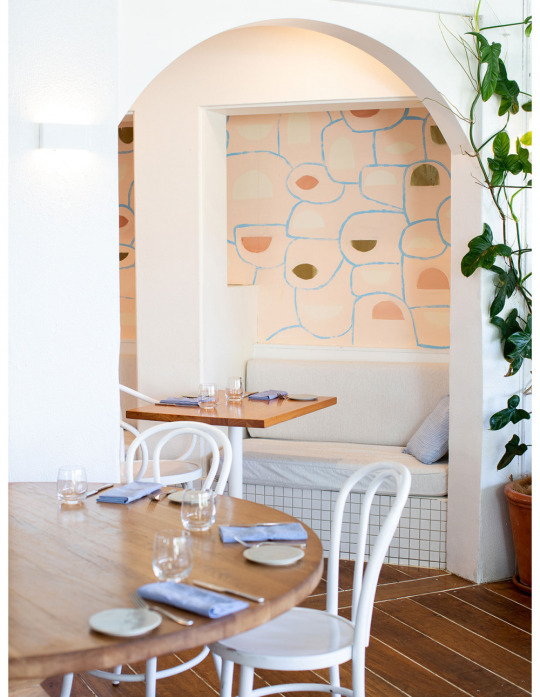#lexicon institute of hotel management
Explore tagged Tumblr posts
Text

3 Year program in Hospitality Studies
After completing their high school education, students who wish to work as managers in the hospitality industry can choose from a variety of courses offered by the Lexicon Institute of Hotel Management. These courses are specifically tailored for young adults who aspire to launch their own hotel business, students who plan to pursue a higher degree in the same field later, experienced professionals who wish to update their qualifications, and young aspirants from other fields who have lower proficiency in English and who wish to enroll in a foundation program or pursue a career move into the international hotel and hospitality industry.
#hotel management course fees pune#lexicon institute of hotel management#hotel management course duration#1 year diploma in hotel management fees#hospitality management courses after 12th#3 Year program in Hospitality Studies
0 notes
Text
Pursue Excellence With Hotel Management Courses In Pune
The hospitality industry is one of the fastest-growing sectors in the world, offering a plethora of career opportunities for individuals passionate about delivering exceptional guest experiences. Aspiring professionals seeking to make their mark in this dynamic field often turn to hotel management courses in Pune, a city known for its vibrant culture and educational excellence.
Why Choose A Career In Hotel Management?
Hotel management combines the art of hospitality with business acumen, equipping students with skills in customer service, operations, marketing and financial management. A career in this field opens doors to diverse roles, including hotel operations, event management, travel and tourism and luxury services. Moreover, with the rise in global tourism, the demand for skilled professionals in this domain continues to grow.
The Benefits Of Studying In Pune
Pune, often referred to as the "Oxford of the East," is home to some of the finest institutions offering hotel management courses in Pune. The city provides a perfect blend of academic rigor and practical exposure, ensuring students receive comprehensive training. Additionally, Pune’s proximity to renowned tourist destinations and its booming hospitality sector make it an ideal location for aspiring hotel management professionals.
Key Features Of Hotel Management Programs
Hotel management courses are designed to cover a broad spectrum of topics, including food and beverage services, front office operations, housekeeping and hospitality marketing. These programs often include internships and industry projects, enabling students to gain real-world experience. Students also develop soft skills such as communication, teamwork and leadership, which are essential for thriving in the hospitality industry.
Why Choose Lexicon Institute Of Hotel Management?
When it comes to pursuing a career in hospitality, choosing the right institution can make all the difference. The Lexicon Institute of Hotel Management, part of the esteemed Lexicon Group of Institutions, offers world-class hotel management programs tailored to industry needs. The institute stands out for its state-of-the-art facilities, experienced faculty and a curriculum that integrates theoretical knowledge with practical application.
Lexicon ensures that students receive hands-on training through collaborations with top hotels and hospitality brands. The institute’s strong emphasis on placements has resulted in its graduates securing roles in prestigious organizations worldwide. Moreover, Lexicon focuses on holistic development, fostering not only technical expertise but also critical thinking and interpersonal skills.
Conclusion
For those passionate about a career in the hospitality industry, enrolling in hotel management courses in Pune is a step in the right direction. With its rich educational landscape and thriving hospitality sector, Pune provides the ideal environment for aspiring professionals. Among the many options, the Lexicon Institute of Hotel Management stands out as a premier choice, offering unparalleled learning experiences and career opportunities. Embark on your journey with Lexicon and unlock your potential in the world of hospitality.
0 notes
Text
All You Need To Know About Hotel Management Courses And Their Amazing Scope For Your Future
A hotel management course can make you adventurous, confident, and approachable. In addition, it can help you experience a new culture and understand the importance of teamwork. You can learn more about this by getting into any hotel management college in Gujarat, Pune, and Kolkata.
Defining hotel management in detail
Hotel management comes with various responsibilities and needs you to be strong enough to handle all of them. In addition, you need to be able to address new challenges, adapt to new environments, and meet high-quality standards.
What are the roles and responsibilities that you are expected to meet as a hotel management student?
Being a hotel manager, you should be able to handle a large team. Apart from these, you should be able to fulfill other responsibilities. These include the following:
Be responsible for overseeing and having a solid knowledge of finance.
Having a strong ability to plan, service, and organize things.
While you have a team of managers working alongside you, you have to lead rather than follow as a hotel manager.
You must also make sure your staff manages their time and departments efficiently.
You must have strong leadership skills, attention to detail, and teamwork skills.
The ability to spend time monitoring the guest and keeping track of them.
Why choose hotel management rather than doing any other random courses in your higher studies?
The hotel management industry is an evolving industry, and it continues to expand. It is considered to be one of the fastest expanding industries. According to some research, around 80 million new jobs have been offered by the hotel management industry over the past few years. It holds the position of Nine.
What are the top colleges that you can get into to complete your course in hotel management for your higher studies?
The rising demand for the course of hotel management has led many colleges towards including this subject in their educational curriculum. However, among them, there are only a few that can provide you with the best curriculum. Some of those top universities in Gujarat, Pune, Kolkata, and other cities are listed below:
Auro University
Indian Institute of Hotel Management
International School of Hospitality and Tourism.
Lexicon Institute of Hotel Management.
1 note
·
View note
Text
Top 5 entry requirements for anybody who wishes to pursue PGDM
Eligibility and PGDM
With a rapidly ever-growing and fast-changing business industry at work, how is one supposed to stay in the game and not fall off due to a lack of adaptability to change in trends and lack of soft skills and practically correct acumen of things? These things can be gained by you at a university level, regardless of being a fresh graduate or a working professional. It can be gained best in the form of an MBA and a PGDM.
PGDM or Postgraduate Diploma in Management is a diploma course in Business management. It is very similar yet different on some levels from an MBA which is a Master’s degree in Business Administration. It is a 2-year duration Post Graduation course and is offered in most management colleges and has a very industry-sensitive curriculum. Due to its autonomous nature, the curriculum is very practical and has soft skills required for the industry, and its shorter duration and cheaper fees, as compared to an MBA, make it a great path to enter the industry faster and also swiftly gain a lot of assets. This course does not need to be affiliated with the university as autonomous colleges are also able to have these courses and they are as much credit as the affiliated colleges. These colleges can have slightly different curriculums and can also offer different electoral subjects. Some of the Postgraduate Diploma in Management courses are as listed below:-
Post-Graduation Diploma in Management in Marketing- The course helps in learning the important marketing activities of a product or enterprise like sales and distribution, product & brand development, and market research.
Post-Graduation Diploma in Management in Finance- Helps the one to understand and deal with the dynamic monetary and financial business functions of an organization like banking, economics, accounting, and market structure, etc.
PGDM Post-Graduation Diploma in Management in Information Technology- The course helps in skills for account management, systems consultancy, business development, sales, and ERP solutions.
Post-Graduation Diploma in Management in Human Resource - This course helps in developing skills to deal with industrial relations and personnel management and hence creating jobs within the organizations relying hugely on the mobilization and development of their human resource and workforce.
Post-Graduation Diploma in Management in Hospitality and Tourism- The upcoming luxury hotels, booming aviation industry, and tourism development have led to the opening of new job opportunities in this sector.
Eligibility criteria for any PGDM course?
To be able to do any course, one has to be first eligible for it. The same is the case for the Postgraduate Diploma in Management. If we are to check the best universities like Xavier, IIM, and Lexicon Mile, we can list down the top 5 entry-level requirements for anyone who wishes to pursue a PGDM. They are as follows:-
Entrance exam -The applicant must pass and score a good score in the entrance exam required by the college. Some of these exams are conducted by colleges/universities as many of these institutions are autonomous. The exams are namely –
Graduate - The applicant has to be a graduate with a bachelor’s degree or of some other equivalent qualification obtained in any discipline.
Passing percentage - The applicant needs to have passed with 50% or more for the bachelor's degree or the equivalent course.
Work experience – Some Schools require the applicant to have some work experience and the institute specifies the minimum required work experience.
Basic Understanding of the business industry- Some schools require the applicant to have a basic understanding of the related business industry (for example, the Tourism industry for the PGDM Tourism), be able to grasp the skills and concepts they will teach in the particular PGDM course.
Common Admission Test (CAT)
Xavier Admission Test (XAT)
Graduate Management Aptitude Test (GMAT)
Common Management Admission Test(CMAT)
Management Aptitude Test (MAT)
Association of Indian Management Schools Test for Management Admissions
Narsee Monjee Institute of Management Sciences Management Aptitude Test (NMAT)
Symbiosis National Aptitude Test (SNAP)
Indian Institute of Foreign Trade (IIFT)
Institute of Rural Management Anand (IRMA)
How can I prepare for my PGDM course?
Applicants need to study meticulously to crack the required entrance exams and pass with a score that is acceptable to the college. Some colleges offer previous year test questions and mock tests for preparations.
Students who are freshly graduated need to work as an intern or gain the required working experience required by the college. Some colleges offer internship programs within the campus too. Students or Graduates who have worked in family businesses need to get official documented proof or a certificate validating their work there. But the company has to be officially registered for the work and certification to be valid. Working professionals need not worry about these criteria as their current jobs also fulfil the work experience requirements. It is the same case for entrepreneurs and self-employed professionals.
If the applicant has scored less than 50% in their graduation, they can opt for distance learning PGDM courses that are available in some colleges. They have to be careful in choosing the college as the reputation of the college also affects your course accreditation.
Applicants need to be careful in choosing the college and course they are doing as there have been cases of fraudulent colleges and/or courses in the past. It is always safer to do the course from a reputed college as it will also increase the value of the course and in turn your resume.
Every degree requirement is different and yet the same. It is really important to note that, you can prepare yourself with a good amount of work experience for the PGDM course as to its flexible course creation. There are never limits to imagination and dreams. Be consistent and focused throughout your schooling and graduation and you will get the pay-off while applying to your dream college or institute.
Read our next blogs:
How Lexicon MILE is leading in creating employment opportunities with specialization in Business analytics
Here's The Overall Curriculum That Top Colleges Offer Under Their PGDM Courses And What to Expect.
Opportunities for a PGDM graduate
Click here to apply
Lexicon Management Institute of Leadership & Excellence can take you places!
Lexicon Management Institute of Leadership and Excellence is a part of the Pune-based Lexicon Group of Institutions, established in 2006. The Lexicon Group of Institutions includes Schools, Pre-schools, and Schools for specially-abled students along with the Lexicon Management Institute of Leadership and Excellence.
Lexicon MILE was established in 2009 which is best MBA college in Pune. The total number of students in the Lexicon Group of Institutions is more than 10,000. Lexicon Management Institute of Leadership and Excellence has state-of-the-art teaching aids and the “Innovation & Incubation Centre” to promote entrepreneurship and start-up culture.
Lexicon MILE which is top PGDM and MBA college in India operates a Centre for Excellence (CoX) to further academia-industry interface through research and consultation work beneficial for industries involving its students with experienced Professors/Researchers.
Lexicon Management Institute of Leadership and Excellence believes in the “One Student a Time” approach to build exclusivity in students through fundamental academic processes, robust evaluation methods, innovative induction, strong internship systems, and exposure to managing world-class events. Lexicon Management Institute of Leadership and Excellence prepares the students to be industry-ready through various academic and extra-curricular exposures.
0 notes
Text
The General Manager Of Raes On Wategos’ Scored Her Dream Job, In Everyone’s Dream Location
The General Manager Of Raes On Wategos’ Scored Her Dream Job, In Everyone’s Dream Location
Dream Job
Sasha Gattermayr

The iconic, beautiful, Raes on Wategos. Photo – Kara Rosenlund for The Design Files.

I would like to live her please! Photo – Kara Rosenlund for The Design Files.

Francesca Webster. Photo – Kara Rosenlund for The Design Files.

Checking in with heads of departments is the only part of Francesca’s job that’s the same every day. Photo – Kara Rosenlund for The Design Files.

Every room is filled with light and Moorish architecture. Photo – Kara Rosenlund for The Design Files.

The restaurant. Photo – Kara Rosenlund for The Design Files.

An art-filled corner. Photo – Kara Rosenlund for The Design Files.

Treasures on display. Photo – Kara Rosenlund for The Design Files.

The team! Photo – Kara Rosenlund for The Design Files.

Tasting menus with the head chef. Photo – Kara Rosenlund for The Design Files.

A definite perk of the job…. Photo – Kara Rosenlund for The Design Files.

Photo – Kara Rosenlund for The Design Files.

An eye for detail is crucial at all times. Photo – Kara Rosenlund for The Design Files.

Photo – Kara Rosenlund for The Design Files.

Photo – Kara Rosenlund for The Design Files.

Poolside refreshments. Photo – Kara Rosenlund for The Design Files.

We dare you to find a better looking workplace! Photo – Kara Rosenlund for The Design Files.
If there was anywhere in the world that Dirty Dancing could occur in 2020, it would definitely be Raes on Wategos. There’s something about its bleached white towers and serene subtropical setting that conjures up the same perfume of magical summer romance as Kellermann’s Resort. But instead of Patrick Swayze, Francesca Webster brings the harmony and sophistication to this Byron Bay institution.
As the General Manager of Raes, Francesca is responsible for ensuring every aspect of a guest’s experience runs smoothly, from arrival to check-out. The cool, composed and smooth pace of the hotel’s reputation is entirely her responsibility to maintain! This involves co-ordinating a large number of staff, checking in on guests throughout the day and constantly being one step ahead.
A natural skill for anticipating every need makes Francesca so good at what she does. Her job requires her to be switched on and extraordinarily professional every minute of the day. And though being simultaneously charming and efficient ALL the time sounds easy (not), it’s a special and underrated combination. Like a duck swimming on a lake, Francesca must look composed at all times, regardless of whatever frantic paddling is going on underneath.
A reverence for old-fashioned service in an Airbnb economy is what makes Francesca so impressive. After polishing off a commerce degree with majors in marketing and international business (and a spell working abroad in Bologna!) Francesca honed her experience in the luxury services industry at the Park Hyatt in Sydney, where she started in the communications team, and quickly learnt the ins-and-outs of operating a large luxury hotel. But, it was a personal trip to Halcyon House in Cabarita Beach which really piqued her interest in boutique, designer, service-savvy hotels.
Turns out, coveting a workplace gets results! Francesca spent two years working at Halcyon House as their Relationships and Lifestyle Manager, where she met two of Australia’s contemporary aesthetic wunderkinds – Tamsin Johnson and Lucy Folk. It was recommendations from each of these designers that landed her the job at Raes in 2017 and the rest – as they say – is history.
The most important verb in the get-your-dream-job lexicon is…
Tenacity. Anything worth having doesn’t come easy.
A typical day for me involves…
There is no typical day in a hotel! However, the morning is when I have more routine and structured ‘me’ time. I like to start my day by either getting to the top of the lighthouse, going to pilates at Hustl or joining our guests at any of our in-house wellness activities (like yoga on the terrace!). Naturally, followed by an ocean swim at Wategos or the pass, then coffee.
Breakfast in the dining room is a great time to check in on guests, how they slept, if there is anything we can change (or add) in the room to make them more comfortable or assist with plans for the day. It’s also a nice opportunity for me to introduce myself to those I haven’t met yet. Then I write welcome cards for those guests due to arrive that day.
The rest of the day will always involve a catch up (collectively or one-on-one) with each head of department from our guest experience manager, head chef, dining room manager, spa manager and housekeeping manager. We are a tight-knit bunch and our communication is key. They drive our front-line staff and it’s empowering to work beside individuals who all share the same vigour and passion for the property! Our short- and long-term goals are reviewed daily and we make a point of sitting down and discussing any positive or negative feedback every day.
Aside from catch ups with our management, we brief all departments and every staff member on shift at specific times of the day, so I attend all briefings when I can as they’re pivotal to shaping the Raes experience! In all briefings, we discuss guest preferences, previous visits, upcoming occasions, even down to how they like their coffee in the morning or the glass of pinot they enjoyed last time they stayed with us. The briefings across all departments enable us to speak the same language, and our guests feel catered to in an unobtrusive, comfortable and luxurious way.
It’s hard to place me at any one time, I am sometimes in the kitchen with Jason testing his menus, in the cellar bar chatting to guests, inspecting suites with Laure (our guest experience manager), by the pool with David (our housekeeping manager) and sometimes even on the roof!
The most rewarding part of my job is…
Raes as a project has been an incredibly fulfilling and rewarding journey. Without a doubt, watching my staff interact with guests in such a genuine but professional way is what is most rewarding for me. And what I am most proud of!
On the other hand, the most challenging aspect is…
People often assume the luxury hotel landscape is all glitz and glamour. But the reality of it is that it’s hard work 365 days a year 24/7. Interestingly though, the pursuit of ultimate guest satisfaction can be challenging when there is no cookie-cutter experience. Humans are innately unique with differing opinions, expectations and experiences, so being able to forecast and satisfy all of these expectations across all of the hotel touchpoints can be challenging. But this is at the core of what I do! Striving to hit all those limitless satisfaction thresholds is what makes my job so dynamic and diverse every day.
The culture of my workplace is…
Passionate. We all believe very strongly in what we do and at the centre of it all, is a talented team! From our interior designer to our Sommelier, Housekeepers, each have their own unique talent that they are passionate about. This culture in the staff is often what guests say they love most – witnessing people doing what they love, working hard and experiencing the rewards by making the guests happy.
When I was growing up I wanted to be…
Bizarrely, a figure skater!
The best piece of advice I’ve received is…
Surround yourself with people who want the best for you. Motivation breeds motivation. Positivity breeds positivity.
In the next five years, I’d like to…
Oversee the growth of the Raes brand beyond Wategos Beach. Asserting ourselves as an industry leader of high-end, genuine and unique experiences across many properties and continents. I also see Raes being able to pave the way for a ‘hotel chain’ to diversify into many different offerings like a global concierge programme (having the Raes service at your fingertips no matter where in the world you may be, to find that perfect Italian Tuscan villa, hire a helicopter for you when you arrive in Monaco, or create and host a 2-day itinerary aboard Sea Raes on Sydney Harbour), event management and catering. The opportunities are limitless! The end goal would to be able to share, host and offer the Raes experience wherever in the world you may be. Watch this space!
My favourite part of the job is…
When you reach the perfect balance of guest and staff satisfaction. This happens when you give your staff the platform and tools to perform, grow or learn within their roles, and it inspires the same level of satisfaction guests get from the actual hotel experience. That’s the sweet spot and my favourite part of what I do.
0 notes
Text
Opening Bell: July 12, 2019

Two weeks ago, the Supreme Court, in a decision authored by Chief Justice John Roberts, blocked the attempt by the Trump administration to add a citizenship question to the 2020 Census. In his opinion, Roberts explicitly stated that a citizenship question is Constitutional, and in fact dozens of previous censuses included such a question, but rather it was the reasoning given by the Trump administration in support of the citizenship question that, according to Roberts, “appeared contrived.” While a citizenship question has indeed been included several previous census questionnaires, the argument against including one in the 2020 Census is that, in the context of this administration’s approach to immigration and current migrants who have overstayed their status, such a question is an attempt to weaponized the census as a means to suppress minority responses. The significance of this is that the census was not, and never has been, meant to be used as a means to measure “citizens,” but rather of the total number of people residing in the United States. Regardless, within 24 hours of the Court’s decision, lawyers with the Justice Department appeared to announce that they would not pursue a citizenship question any further, only to be directly contradicted by the president the very next day. In addition to conjecturing that a citizenship question could be added on a supplement—the primary questionnaires began printing almost immediately after the Supreme Court’s decision—Trump even floated the possibility of delaying the census. This was never a realistic possibility as federal law mandates that the census begin no later than April 2020. Even so, yesterday morning the White House announced that the president may attempt to force a citizenship question into the census by means of an executive order. When it became clear that this would likely be thwarted by judicial action, the White House finally relented and by yesterday afternoon it was officially acknowledged that the president would no longer seek to add the question.
Yesterday, the House of Representatives, following through on its attempts to aggressively probe the Trump administration, authorized up to a dozen subpoenas to current and former administration officials in order to question whether the president ever engaged in any activities that could be construed as obstruction of justice—the report by Special Counsel Robert Mueller now, famously, having said that if the OSC thought that the president did not obstruct justice, they would have said so. The most prominent names on this list of subpoenas includes former Attorney General Jeff Sessions, and current White House advisor, and presidential son-in-law, Jared Kushner. The White House has already pushed back on numerous other subpoenas, and it would not be surprising at all if they seek to block both Kushner and Sessions from testifying, or invoking privilege to limit what they can speak to. Neither will likely need much convincing.
The number of four-year, bachelor’s degree granting colleges and universities peaked in 2013-2014. Since then it has entered into a decline, as small, largely private liberal arts schools with relatively open admissions standards, are experiencing financial collapse. Even though the number of college applicants is the highest ever, the population downturn in certain parts of the country, notably New England, has led to fewer high school graduates, while the selectivity of students has led them to focus their applications on more selective schools. This is the story of Newbury College in Massachusetts, which closed its doors after graduating its last class of students in May 2019. But, as the article points out, it could be the story of numerous other schools around the country and particularly on the east coast, which already boasts a plethora of elite and Ivy League level institutions. And as population shifts changed—first having moved westward and then southeastern—it is possible that over the next decade, we will see this swathe of school closures follow, across the country mimicking Manifest Destiny.
In June 2009, a man calling himself Peter Bergmann, arrived in Sligo, on the north coast of the Republic of Ireland and asked to be driven by a taxi to an inexpensive hotel. Upon arriving, he paid for three nights in advance with cash, gave his aforementioned name which was not checked by front desk staff against any ID, and promptly moved into his room. Over the next three days, Bergmann left his room, according to CC television cameras, 13 times. Each time, he appeared to be carrying a purple plastic bag filled with…something. Each time he returned, he was no longer carrying the bag—which was likely folded up in a pocket—and there is no indication of where he deposited the contents of the bag. After three nights, Bergmann checked out of his hotel room and sought a bus to a nearby beach popular for bathers. At each stop along the way, Bermann spoke to no one except in transactional terms, never showed an ID, and never revealed anything about himself other than his name, later proven to be a fabrication, and that he was from Austria. The morning of what would have been his fourth day in Sligo, Bergmann’s body was found on the beach at Rosses Point. Some of the clothing he had been spotted wearing the day before was found folded neatly atop a rock nearby, but no purple plastic bag was found. The autopsy later revealed that Bergmann, or ‘Bergmann’ since police do not regard that as his real name, had not died of drowning, but instead of a heart attack and, perhaps notably, his body was riven with cancer and, according to the medical examiner, he had only weeks to live. The rest of Peter Bergmann’s life, his intentions in Sligo, his actual name, and what he did over the last week of his life, remain a mystery.
On June 1, 2008, a series of shingles on the roof of a building on the Universal Studios backlot had been repaired by maintenance workers, using a blowtorch. They finished their work at 3am and stuck around for an hour to make sure that the shingles were not still warm, and then departed. At least one shingle was still too hot, and ignited the rest of the roof, starting a fire which ripped through much of the famed backlot and by 5:45am, threatened, a large but otherwise non-descript building nearby. This climate-controlled warehouse consistently mostly of hundreds of thousands of old movie film reels, but 2,400 sq. ft. was cordoned off from the rest and held the entire West Coast vault of masters belonging the Universal Music Group. UMG is the largest music label in the world—recently valued at around $33 billion—and through a series of conglomerations and corporate takeovers, has come to own hundreds of thousands of master tapes of some of the most significant recording studios of the mid-to-late 20th century. This vault contained the recording history of entire studios, including famed smaller studios like AVI and Chess, but also significant labels like A&M; estimates are that anywhere between 120,000 and 175,000 masters in the form of everything from magnetic tapes to digital drives were housed in the vault and the fire consumed almost all of them. Masters from Buddy Holly, John Coltrane, Etta James, The Mamas the Papas, Tom Petty and the Heartbreakers, and even perhaps Guns N’ Roses, among many, many others were lost in the conflagration. This essay is about more than the events of June 1, 2008 or even the corporate response from UMG which played down the loss, it is instead about the philosophy behind preserving art, especially from obscure artists, the financial toll of preservation, and the lack of will that apparently exists to preserve a gigantic swathe of American history.
If you have ever traveled through southern Louisiana, one thing you may have noticed is that every single town, large or small, apparently has a Daiquiri stand with a drive-thru lane. Though the word ‘Daiquiri’ is Cuban in origin and was spread to the American lexicon after the Spanish-American War, during which time the U.S. invaded and occupied Cuba, it gained widespread use in the American South starting in the 1980s. In 1982, David Ervin was a college student in Lafayette, Louisiana, which was then situated in a dry parish. Ervin would drive to the neighboring parish to buy alcohol at a store just over the parish line. It was at this store, that Ervin witnessed how the store’s general manager had used a shipment of otherwise unpopular canned cocktails to make alcoholic fruit slushees, which were enormously popular and required virtually no bartending skills to create and serve. Ervin had a vision where this drink could be married to more efficient delivery and decide that a small store with no seating, but only a drive-thru to serve customers in their cars. This is the delightful story of how Ervin, who still owns a drive-thru daiquiri shop today, turned a small investment into a $100,000 per week business.
Finally, Kyle Kondik and Larry Sabato of the Center for Politics, discuss the death of political oddity and Texas billionaire H. Ross Perot, the current state of the 2020 Senate elections, and what the departure of Rep. Justin Amash from the GOP means for his congressional seat. It remains very early in the 2020 cycle, but events have already occurred which will have an outsized influence on the outcomes of the 2020 election.
Welcome to the weekend.
#Opening Bell#2020 census#Supreme Court#John Roberts#citizenship#congress#House of Representatives#subpoena#Jeff Sessions#Jared Kushner#obstruction of justice#politics#Donald Trump#White House#college#higher education#Newbury College#music#Universal Music Group#fire#Universal fire#master tapes#history#Peter Bergmann#Ireland#Sligo#Rosses Beach#mystery#daiquiris#David Ervin
0 notes
Text
What’s in a Name?
My father was born Vito Anthony Orlandella, and he didn’t much care for his name. “Vito” was all right, and in fact, he named his principal business The Vito Fruit Company. No real problem with the benign Anthony, it was the last name he saw as problematic. His one foray into show business as a record producer was done under the name “Tony Vito”. I’m not certain, but I believe he thought that Orlandella was too long and clumsy for a billboard. He had another name ready but never got the chance to use it. A clever anagram made by dropping the first two and the last letters of his name. Thus was born “Vic Landell”. When it came time to name my ballplayer-turned-detective, the choice was an easy one. Call it a homage to my father.
1
Genesis
If you reside in Florida near the Ocean, you qualify as a resident of a “Coast.” If you live between Palm Beach and Miami, you are on the Gold Coast. Between Port St. Lucie and the Indian River? That would be the Treasure Coast. While the area around Cape Canaveral is, no surprise, the Space Coast. Over here on the Gulf of Mexico, we limit ourselves to just one. The stretch that runs from above Tarpon Springs all the way down to Naples is known as the Sun Coast. Now in the dead of a Florida winter, which means that the temperature has plummeted to a mere eighty degrees, I am constantly reminded of Sarah Miles’ languid portrayal of “Alice” in the film “White Mischief” and her line for the ages, “Oh, God, not another fucking beautiful day.”
As my Lotus Elise SC makes the left off Bee Ridge and merges into traffic on Interstate 75 Northbound, I am about an hour away from my destination. Here is your chance to “vet” me. I was born Victor Anthony Landell, on August 22, 1979, at the Massachusetts General Hospital. From day one, everybody called me “Vic.” My father Peter, “Pete,” was a Captain of Detectives for the Boston Police Department, and recently retired to Falmouth on Cape Cod. My mother Katherine, better known as “Kate,” was Chief Nurse at the Dana-Farber Cancer Institute right up until the day a cerebral hemorrhage took her life four years ago. Her death devastated my father. My older brother by eighteen months, Thomas, or “Tommie”, is a Commander in the Navy and living out my dream, flying fighter jets off a Nimitz-class carrier.
My IQ score says I should have been a great student, but my interest level begged to differ. I was more concerned with the Red Sox and girls, though not in that order. If you look across the Charles River from Storrow Drive you can see Harvard and M.I.T. “So near and yet so far.” Let’s just say I wasn’t ticketed for either, more likely some State college or, with luck, UMass.
I didn’t get to UMass, and for one good reason, my left arm. I played baseball in high school gifted with a decent fastball and not much else. During my junior year, a coach took me aside and said, “You have the longest fingers I have ever seen. Why aren’t you throwing curve balls?” Good question. So I worked and worked to develop what ballplayers call “the deuce.” Lo and behold, by senior year my curve and I were unhittable.
Then the phone started to ring, and suddenly, college coaches who a year before wouldn’t have given me the time of day were begging me to play for them. Being a Catholic, wanting my parents to see me play, and have the chance for a quality education, I chose Boston College.
The Society of Jesus expected me to do more than just pitch. Things like go to class, study, pass, and oh yeah, graduate – concepts that USC and Texas didn’t bother to mention. A major in history was coupled with a minor in philosophy. Philosophy? Once the Jesuits have you, they never let you go. Of course, neither discipline would get me a job since philosophers are always the last ones hired. Meanwhile, my hurling was coming along nicely, and after four years, I graduated – with honors.
Now, Boston College is no one’s idea of a baseball or for that matter a football factory. If you want a centerman or a lawyer, you look here. If you want a shortstop you look elsewhere. Most scouts couldn’t find Chestnut Hill with both hands and a map. Wonder of wonders, midway through my senior year, I was being scouted by the Pittsburgh Pirates. Miracle of miracles, they drafted me. OK, so it was in the 30th round, but I was in no position to quibble. My philosophy career would have to be postponed. Game called on account of the National Pastime.
Continuing up I-75, a town appears on our left. Not just any town, it is Bradenton aka Sarasota’s ugly stepsister. Bradenton has precisely two claims to fame. It is the home of Tropicana Orange Juice, and for six weeks every winter, the home of the Pirates. This is where it all began for me, February 2000, spring training with Pittsburgh. I arrived on the afternoon of the 15th – bringing with me a glove and a dream. When a Major League team drafts you in the 30th round, your signing bonus will just about pay for a baloney and cheese sandwich. I couldn’t care less. I was a Professional Baseball player.
In all, three summers would pass toiling in the Pirates minor league system. I started playing “A” ball in Lynchburg, Virginia; the year after “AA” in Altoona, Pennsylvania; and finally, “AAA” in Nashville. While down on the farm, I played with guys on the way up, some others on the way down, and a few on the way out – has-beens and never-wases, prospects and suspects. The Pirates told me I was a prospect. So I rode the buses, slept in team motels, ate a lot of fast food, and waited. In the spring of 2003, my time finally arrived.
With Bradenton in the rearview mirror, we now transition to the I-275. The high-strung Elise is loafing along in 6th gear at 80 mph and goading me on as the road bends right. Coming into view is our local “Jewel in the Crown,” the Sunshine Skyway Bridge, according to some expert the third greatest bridge in the world. It’s the gateway to St. Petersburg, the back way to Tampa.
At the end of spring training, I was called into the manager’s office. There would be no going back to Nashville, I had made the team and would go north with the Pirates. The word I was looking for was incredulous, because some way somehow, I was headed to “the show.”
The end of the Bridge is the start of St. Petersburg. A city of two hundred and fifty thousand, it sits across the bay from Tampa and faces the Gulf of Mexico. If you are poor, you live in Tampa. Rich? St. Pete.
Further up the 275, accompanied by the wind noise around my open car and the whine from the supercharger a foot behind my head, I decide to fight back. Up comes the volume on the Lotus’ CD player. A note about my music – I was educated by parents who explained to me that modern music sucked and rap is crap – ‘60s rock and roll is the only real music. Thus, the CD changer has everything from the Beatles covering “Ain’t She Sweet” to the Rivingtons and their immortal “Papa-Oom-Mow-Mow.” Then mix in a dash of Francis Albert Sinatra, and since this is Florida, a dollop of James William Buffett, and presto – music.
When we arrived in Pittsburgh, I was told that my starting days were over and I was now a short reliever. In the lexicon of Baseball, a left-handed “short reliever” is the guy who arrives in the 8th inning, with the game hanging in the balance, for the sole purpose of getting out the other team’s best left-handed hitter. So, I had a role to play.
That first year in a Major League clubhouse was an education. I learned the official language of Baseball – profanity. Players are quite skilled at using modifiers: “That frigin’ ball went so frigin’ far and so frigin’ high!” They also like adding the word “mother” for emphasis. The boys are also adept at coming up with phrases to describe particular situations. If a pitcher goes nine innings and allows two hits, a player might be apt to say he “stuck the bat up your butt.” Conversely, if a reliever comes in, faces four batters, gives up four hits and allows four runs to score, he has just “shit all over the place.” Then there are the ladies. What to a rock guitarist is a groupie, to an outfielder is an Annie. Baseball Annies, like groupies, come in various sizes and shapes, some rather good, some with lots of “personality.” They have one thing – all right, two things in common. They want to meet a ballplayer, and they know the exact location of every team’s road hotel. Some players will always choose quality over quantity, but for others, “a ten o’clock two is a two o’clock ten.” And, of course, there are the bird-watchers, those drawn to the mating call of the double-breasted mattress thrasher.
The year before, Pittsburgh had opened a glorious new ballpark right on the river with a view of downtown. Unfortunately, their silk purse came with a sow’s ear – the Pirates. That summer, the team mustered just seventy-five wins to finish fourth. We outdid ourselves the following season, seventy-two victories. Ta Da!
For two years, I did my job, did it pretty well, and then awoke one morning to learn I had been traded to the St. Louis Cardinals. The Pirates had started yet another urban renewal project. Rebuilding was the one thing they led the league in. Desirable assets, me I suppose, were being exchanged for still more prospects. I was headed for my second team, having been swapped for the legendary “player-to-be-named-later.”
At least I was going to a winning team with a great manager in Tony La Russa. In 2004, the Cards won a stupefying 105 games to take the pennant before having their lunch handed to them by the Red Sox in the Series. The team had front row seats for the death of the Curse. 2005 looked to be more of the same as we won 100 games and swept the Padres in the first round. In the next round, however, we got swarmed by the Astros’ killer B’s. Bagwell, Berkman and Biggio sent us packing in six games.
I enjoyed my season – notice I used the singular and not the plural – in St. Louis because the fans were arguably the best in Baseball. Soon, it was moving day again. The Cardinals had some young arms ready to come up from the minors. “Young arms” is a euphemism for rookies who play for the minimum, and I was a highly paid veteran – as a result of arbitration – at over $1,000,000 a year.
There is a dirty word for what I had become, a “journeyman.”
And while we are on the subject of dirty words, now appearing on your right is Tropicana Field, by unanimous consent the worst ballpark in the world. To me, it’s the box St. Petersburg came in, a domed monstrosity full of girders, cables, catwalks, and about a million-and-a half-ground rules. All of which begs the question, what genius decided that on a summer evening Floridians wanted to be indoors?” Happily, I had the displeasure of playing there on precious few occasions.
So, the Cards shipped me off to the Atlanta Braves. Talk about your boomtown, you can feel it growing around you. In Buckhead alone, there is enough nightlife for five cities, and, per square foot, more beautiful women than anywhere else in the world. You can’t swing a fungo bat without hitting a major babe. Needless to say, my three years in Atlanta were a lot of fun, thanks in large part to a new, lucrative three-year contract.
While there, I got to play for another big-time manager, Bobby Cox. There is a problem with playing for the likes of Cox and La Russa – they are used to winning. For fifteen straight years, the Braves had made the playoffs. Well, we put a stop to that.
Not only did we not make the playoffs, we chalked up the first losing season in fifteen years.
“Oh Lord, I hope they are not rebuilding.”
The Braves were a team in transition, learning to cope without future hall-of-famers Greg Maddux and Tom Glavine. The next season, we somewhat righted the ship – 84 wins left us five games behind the Phillies.
In reality, all we did was rearrange the deck chairs on the Titanic. The win total dropped to 72 the following year. Then we were 20 games adrift of the Phils. It was time to rebuild in Atlanta and time for me to go. During the winter, I was traded again, this time to Philadelphia, and in February 2009, I reported for spring training with the Phillies in Clearwater.
“Would it have killed somebody to trade me to the Red Sox?”
Clearwater is precisely where we are now. Having exited the 275, we are now northbound on U. S. Highway 19. First stop is the Lotus Dealer where I am leaving the Elise to be serviced. Note to anyone who plans on buying a high performance British sports car – make sure you know where the dealer is. Mine is fifty-five miles from home.
I am fortunate that the appointment only takes about three hours, and the service manager gives me a loaner car lest I miss an appointment and wind-up with parts stamped “Made in England” littering the Interstate. Ten minutes later, we are back on the Highway.
Spring with the Phillies did not start well. The Club already had left-handed relievers, so, why did they trade for me? There was talk about my going back to the minors, hardly music to my ears.
After six years in the show, the thought of playing out the summer in Allentown, PA, toiling in AAA for the Lehigh Valley IronPigs – whatever they are, was almost too much to bear. Now, for the first time ever, the “R” work crept through my mind. Retirement.
That said, pitchers can be notoriously fragile. Sure enough, a ligament tear here, a pulled muscle there, some tendinitis, and surprise – once again I was invaluable. That summer, the Phillies used twenty-two different pitchers.
I hated Philadelphia – didn’t like the town or the people, and the cheese steak will never replace the sub sandwich or a slice of Regina’s pizza. The poor man’s Cradle of Liberty held no allure for me since I grew up in the real one. The Phillies had moved into a new stadium in 2004, a big upgrade over the dump they used to play in. Citizens Bank Park is many things – pitcher friendly is not one of them. It wasn’t so much a ballpark as it was a launching pad – Canaveral, without the alligators. There were precisely three saving graces. The first, the Phillies were winners. Second, thanks to my now being eligible for free agency, they were paying me over $6,000,ooo a year on a three-year deal.
The third came in June of 1910, when a Delta charter landed at Logan Airport. As a result of inter-league play, the Phillies came to Boston. The next day, I walked on the grass at Fenway Park. You can change grass to sacred soil because, to any true New Englander, this is hallowed ground as surely as the sod on Lexington Green. I got to pitch in Baseball’s Basilica.
A month later, it was well past midnight when we checked-in at San Francisco. I got to my room, and the message light on the phone was blinking. My dad had called and said it was urgent. I called his cell phone and barely recognized the voice on the other end. Through his trembling lips came two words, “She’s gone.” My mother was dead. Four hours later, I was in a cab back to SFO, with a reservation on the first flight home. I arranged for a high school buddy to pick me up at Logan, and we drove to Newton.
The view of our classic New England brick and wood home off Commonwealth Avenue was a sight for these sore eyes. My father was crushed. High school sweethearts, they had been married for thirty-seven years. Two days later, we buried her in Holy Cross Cemetery in Malden.
The Navy was able to get word to Tommie, somewhere in the Med. As for my dad, my only hope was that he would throw himself into his work, which he did. As for me, heartbroken, I went back to helping the Phillies win ballgames. And we kept on winning. Like every team, we had injuries, and like every good team, we fought through them.
We put together a solid 93-win season and in September, clinched the Club’s third straight Division Title. We rolled through the playoffs, making short work of the Rockies and the Dodgers, and landed a spot in the Fall Classic. I now had a shot at a ring, but looming in the other dugout was the team every Bostonian loathes, none other than the Evil Empire. Swear to God – I’d root for the plague if it were playing the Yankees.
The bastards had won the Series twenty-six times, and far be it from us to stand in the way of number twenty-seven. So, the Bronx Bombers took us out, four games to two. No title for the City of Brotherly Love, and sadly, no ring for moi.
Midway through the next season, while warming up, I felt a sharp pain in my elbow. There are two places a pitcher never wants to feel discomfort – in the shoulder, which usually means a torn rotator cuff, and the elbow, most likely ligament damage. I wanted a second opinion. It took one trip to the Kerlan-Jobe Clinic in Los Angeles and one exam by the great Doctor Jobe himself to confirm my own diagnosis, my elbow needed work. In the lingo of medicine, it’s known as an “Ulnar collateral ligament reconstruction.” For a pitcher who didn’t quite make medical school, it’s called “Tommy John Surgery.” On July 23, I went under the knife. The surgeons were pleased with the procedure, and two weeks later I began rehab.
I was three months into rehabilitation before I was allowed to simulate a throwing motion. One month later, they let me swing a golf club. By February, I was throwing off a mound with little discomfort. I then joined the Phillies in Clearwater to do more throwing and increase my arm strength. In April, I started throwing my bread and butter pitch – the curve ball. For whatever reason, it wasn’t breaking, or as players would say, “biting.” During August, there was a traditional rehab tour of the minors, and left-handed batters who I used to have for lunch were lining shots over me, under me, and through me. In September, when Major League Baseball teams expand their rosters to forty players, the Phillies didn’t even bother call me up. In their minds and mine, I was done.
No sad songs for me. I had put in nine seasons in the bigs and earned what in clubhouse-ese was a “shit load” of money, and in time, will receive a very generous pension. While no one’s idea of a miser, I was somewhat careful with my Benjamins. Teammates would pony up $250,000 for a Ferrari, whereas your humble servant would plunk down 50 large for a Lotus. A $100,000,000 contract usually carries with it a 10,000 square foot mansion. As you will see, I settled for less. And for good measure, I bought a ton of Apple at 100 and sold it at 600. In short, I’m loaded.
Ahead is the Florida Highway 60 exit, then a quarter-mile down the State Road, followed by a right onto Old Coachman Road. Our destination is in sight – Bright House Field, spring home of the Phillies. It is part of the new wave of Florida ballparks, with seats for 7,500 and a berm to accommodate an additional 1,500 freeloaders.
I’m here to have lunch with a good buddy, David Murdoch. Davy was the chief nuclear engineer on what is known in the Navy as a “boomer,” a ballistic missile submarine. As with so many before him, two months without seeing the sun got to be a little old. Having retired from the service, now divorced, and grossly overqualified, the Phillies hired him to be of all things their groundskeeper at Bright House.
We pitchers all loved him because he tailored the field to our liking. Ground ball pitchers got taller grass, and the foul lines were slopped away so a bunt would not stay fair. The bulb finally went on over someone’s head, and he was named chief electrician. He is a stand-up guy, an above average golfer, and one of my best friends.
Lunch is at the Clearwater Wine Bar & Bistro, a popular spot on the water. While we wait for our food, Davy brings me up to speed on what he has been doing.
“The Stadium has decided to update the lighting system.”
Good lights are crucial in Florida for an obvious reason – in the summer, virtually every game is a night game. Davy drew up plans for a new, million dollar system. He got the Phillies to go for it based on the fact that it was more energy efficient and would pay for itself…in just a hundred years.
“You’re going to do that job? I realize that you can take a reactor apart in your sleep, but this sounds like trouble.”
“Do you think I’m going up those towers and handle all that high voltage? How dumb do I look? An outside firm does all the installation work. Design? Yes. Touch? No.”
“Consider me greatly relieved. I have plans to clean your clock at Prestancia. When can you come down?”
“We’ll be on the first tee just as soon as I put baby to bed.”
Two ginger ales, a club sandwich, and a fight over the check later – which I won, I drop him off at the ballpark.
Now back to the narrative. One morning during that first spring with the Pirates, I finished my work out early, borrowed a friend’s car, and went exploring. Seven miles south on U. S. Highway 41, I was stopped dead in my tracks. This was it. The sign said “Sarasota”; it might as easily said Paradise. The town’s motto could have been: “aqua, aqua, ubique.” Latin? Seriously? In English, that translates “water, water, everywhere.” Remember, I’m the product of a Catholic education. The area includes two bays, one intra-coastal waterway, inlets, outlets, canals, a bayou, a river and one Gulf of Mexico. If you love the water, and I do, this is the place.
The little town seemed to have everything – theatre, opera, ballet, excellent restaurants although the search for someone who can make lasagna like my mother goes on, and massive snob appeal, which we call sophistication. How could I not love a place whose symbol is Michelangelo’s David? I heard a voice saying,
“Someday I’m going to live here.”
It was my voice.
After three years in the relative squalor of a Pittsburgh apartment, I was ready to make my move.
Siesta Key is a special place, a barrier island with the Intracoastal Waterway on one side and the Gulf of Mexico on the other. Its signature feature, however, is the beach. By acclamation, the beach at Siesta Key is one of the ten best in the world. The reason? It’s the sand, which is pure white with the consistency of baby powder. It’s mostly borax, and one can walk barefoot on the hottest day of the year and not feel it. If a pitcher isn’t pitching, he’s running. What better place to do my miles than right here?
I knew what I wanted. The Key is crisscrossed with canals that feed into the Gulf. The search was on for a home that sits by a canal. My realtor lined up a couple of choices, and number two was the winner, a three-and-a-den fixer, complete with a pool/Jacuzzi combination, and – drum roll please – a dock.
The combination of needs, work, and the bursting Florida real estate bubble made it a steal. A renovation included Alabaster walls, French doors, and a large island in the kitchen since, to an Italian, the cucina is the center of the universe. It took a month, but one day I woke up and was living a five iron from the Gulf. OK, I’ve told you who I am, where I’m from, and what I used to do. The remaining question is,
“What do I do now?”
Well, for starters, I’m a Florida first responder. I signed on as a member of the shock troops when the inevitable big one, Hurricane “fill-in-the-blank”, comes roaring up I-75. In addition, I do some charity fundraising, help coach a little league team, and in my spare time, I am something of a golfer, thanks to a membership at TPC Prestancia. The membership committee was obviously drunk when they voted me in. Oh yes, there is one more thing. I am quite possibly the first ex-ballplayer ever to become a P.I. That is correct. Vic Landell, former big league pitcher, is now Vic Landell, private investigator. Why and how I got this job in a bit, right now I’m just trying to get home.
U.S. Highway 41 is also the Tamiami Trail, or better known to the locals, “The Trail.” It is the main drag through Sarasota, Bradenton, and miles beyond. Outsiders believe the summer is the worst time to be in Florida, and they would be wrong. The winter is the worst time. Why? I can answer that with one word: snowbirds. The Trail, almost desolate in August, is our version of a California Freeway in January. Ohio and Indiana license plates outnumber those that read Florida. It took all of three weeks before I grew to loathe the interlopers.
“Bastards, why don’t they just go home and leave us alone?”
I was an official resident. Normally they are a fact of life and you just put up with them. Tonight is different – I have a date.
“BURDEN OF PROOF” – Chapter 1 What’s in a Name? My father was born Vito Anthony Orlandella, and he didn’t much care for his name.
0 notes
Text
Hospitality Management Courses after 12th
Lexicon Institute of Hotel Management offers a wide range of hospitality management programs from 12 to 12, designed for a wide audience who want to work as leaders in the hospitality industry: young dreamers Confident in opening their own hospitality business, students who want to find a job in the hospitality sector Young people who want to study in the same field after graduation, have extensive work experience and want to update their qualifications, have ambitions for other jobs but have limited English, want to study preparatory courses or enter the hotel and hospitality sector around the world. business. The duration of a restaurant management course at Lexicon School of Hotel Management can vary from 3 to 4 years, depending on the student's ability to manage the curriculum and see the skills. Lexicon IHM offers a 12-hour restaurant management course with less time, effort and cost compared to other schools.
#Hospitality Management Courses after 12th#hotel management colleges in pune#hotel management course in pune#hotel management eligibility#eligibility for hotel management after 12th
0 notes
Text
Hotel Management Eligibility after 12th | Lexicon IHM
Hotel Management Eligibility: One industry that provides a wide range of courses to 12th grade students is hotel management. To build their future professions, candidates from any field can enroll in hotel management courses. It provides a wide selection of courses for every educational level, from certification to doctorate degrees. The minimal qualifying percentage for admission to Hotel Management programs in Pune is 45% in class 10+2. However, eligibility varies according on the institutions, universities, and course level. Additionally, 10th graders may apply for a diploma or certification in hotel management. The cost of the Hotel Management programme is between INR 15,000 to INR 6,00,000.
#Eligibility for Hotel Management After 12th#Hotel Management Course Duration After 12th#Hotel Management courses in Pune#hotel management colleges in pune#hotel management course in pune#hotel management colleges in pune with fees#top 10 hotel management colleges in pune
0 notes